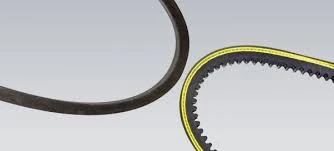- Arabic
- French
- Russian
- Spanish
- Portuguese
- Turkish
- Armenian
- English
- Albanian
- Amharic
- Azerbaijani
- Basque
- Belarusian
- Bengali
- Bosnian
- Bulgarian
- Catalan
- Cebuano
- Corsican
- Croatian
- Czech
- Danish
- Dutch
- Afrikaans
- Esperanto
- Estonian
- Finnish
- Frisian
- Galician
- Georgian
- German
- Greek
- Gujarati
- Haitian Creole
- hausa
- hawaiian
- Hebrew
- Hindi
- Miao
- Hungarian
- Icelandic
- igbo
- Indonesian
- irish
- Italian
- Japanese
- Javanese
- Kannada
- kazakh
- Khmer
- Rwandese
- Korean
- Kurdish
- Kyrgyz
- Lao
- Latin
- Latvian
- Lithuanian
- Luxembourgish
- Macedonian
- Malgashi
- Malay
- Malayalam
- Maltese
- Maori
- Marathi
- Mongolian
- Myanmar
- Nepali
- Norwegian
- Norwegian
- Occitan
- Pashto
- Persian
- Polish
- Punjabi
- Romanian
- Samoan
- Scottish Gaelic
- Serbian
- Sesotho
- Shona
- Sindhi
- Sinhala
- Slovak
- Slovenian
- Somali
- Sundanese
- Swahili
- Swedish
- Tagalog
- Tajik
- Tamil
- Tatar
- Telugu
- Thai
- Turkmen
- Ukrainian
- Urdu
- Uighur
- Uzbek
- Vietnamese
- Welsh
- Bantu
- Yiddish
- Yoruba
- Zulu
Nov . 23, 2024 20:12 Back to list
Understanding the Importance of Timing Belts in Sewing Machines for Optimal Performance
Understanding Sewing Machine Timing Belts Importance, Maintenance, and Replacement
Sewing machines have revolutionized the way we create textiles, unleashing countless possibilities in fashion, upholstery, and various crafts. At the heart of many sewing machines lies a component often overlooked but crucial to their operation the timing belt. Understanding the importance of sewing machine timing belts, their maintenance, and replacement can significantly enhance the performance and lifespan of your machine.
What is a Timing Belt?
A timing belt is a critical component in a sewing machine's mechanism, responsible for syncing the needle's movement with the feed dogs that control the fabric's advancement. This synchronization is essential for achieving precise stitching and ensuring that stitches are uniform and consistent. Timing belts ensure that the needle and bobbin are timed appropriately to create interlocking stitches, which is essential in nearly all sewing operations.
Importance of Timing Belts
The timing belt might seem like a small and insignificant part, but its importance cannot be overstated. When the timing is off, it can lead to various sewing issues such as skipped stitches, uneven seams, or even damage to the machine itself. A well-functioning timing belt ensures that the sewing process runs smoothly, allowing for efficient production and high-quality results. For quilters, garment makers, and hobbyists alike, a reliable timing belt can mean the difference between a successful project and frustration.
Signs of Timing Belt Issues
Like all mechanical parts, timing belts can wear down over time. Several signs may indicate that your sewing machine's timing belt requires attention
1. Skipped Stitches If you notice that your machine is skipping stitches or producing inconsistent stitches, it could be a sign that the timing belt is worn or misaligned.
2. Unusual Noises A timing belt that is fraying or slipping may create unusual sounds, such as grinding or clicking, during operation.
3. Jamming If the machine is frequently jamming or the needle is not moving in tandem with the feed dogs, it may be a timing issue related to the belt.
4. Physical Inspection If you can access the timing belt, look for any visible wear, fraying, or breaks. Regular visual inspections can prevent more severe issues down the line.
sewing machine timing belt

Maintenance of Timing Belts
Preventative maintenance is essential to prolong the life of a sewing machine's timing belt. Here are some tips for proper maintenance
- Regular Cleaning Dust and lint can accumulate in the machine’s interior, including around the timing belt. Regular cleaning of your machine can prevent these particles from causing wear and tear.
- Lubrication Ensure that you follow the manufacturer's instructions for lubricating your machine. Some machines may require specific lubrication points that impact the working of the timing belt.
- Avoid Overloading Sew within your machine's design limits. Overloading it with thick fabrics can strain the timing belt and lead to premature wear.
Replacement of Timing Belts
If you suspect that your timing belt is damaged or has worn out, it is imperative to replace it to restore proper function. Here’s how you can approach this process
1. Consult the Manual Always refer to your sewing machine’s manual for specific instructions regarding timing belt replacement. Different models have varied complexities in accessing and replacing the belt.
2. Seek Professional Help If you are not comfortable with replacing the timing belt yourself, consider taking your sewing machine to a professional technician. They will have the expertise and tools necessary to ensure the job is done correctly.
3. Use Genuine Parts Always replace worn parts with genuine manufacturer parts. Generic replacements may not meet the quality standards required for optimal performance.
Conclusion
The timing belt is a crucial yet often underestimated component of sewing machines. Understanding its function, maintaining it properly, and knowing when to replace it can significantly enhance the sewing experience. By paying attention to the signs of wear and addressing maintenance proactively, sewers can ensure their machines perform optimally and last for years to come. Whether you are a seasoned seamstress or just beginning your sewing journey, investing time in understanding your sewing machine’s timing belt is a step toward achieving sewing excellence.
-
Korean Auto Parts Timing Belt 24312-37500 For Hyundai/Kia
NewsMar.07,2025
-
7PK2300 90916-T2024 RIBBED BELT POLY V BELT PK BELT
NewsMar.07,2025
-
Chinese Auto Belt Factory 310-2M-22 For BMW/Mercedes-Benz
NewsMar.07,2025
-
Chinese Auto Belt Factory 310-2M-22 For BMW/Mercedes-Benz
NewsMar.07,2025
-
90916-02660 PK Belt 6PK1680 For Toyota
NewsMar.07,2025
-
drive belt serpentine belt
NewsMar.07,2025

